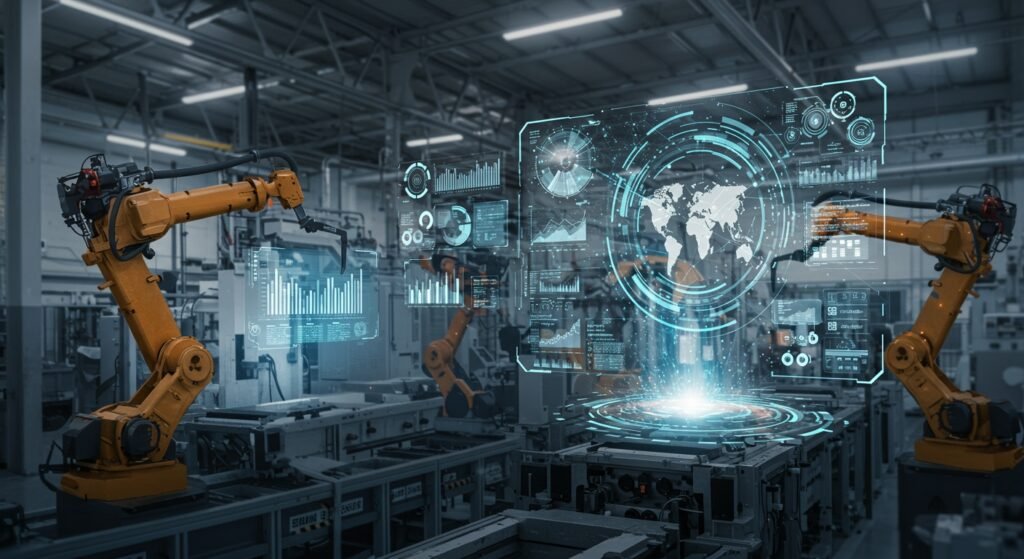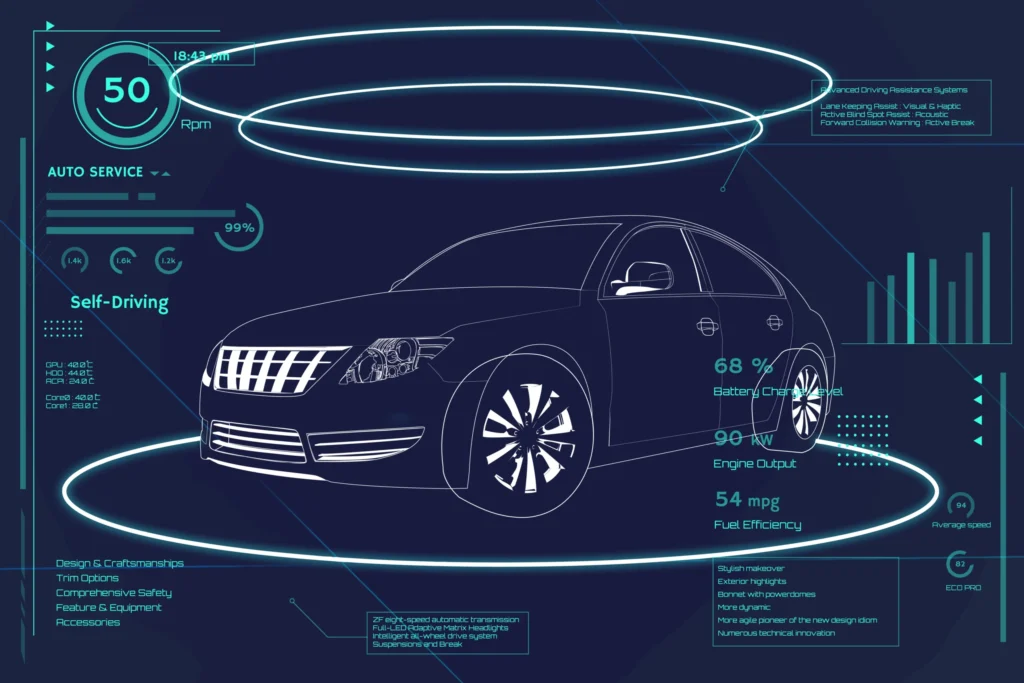Leveraging AI & ML for Real-Time Process Optimization in Factories
The manufacturing landscape is undergoing a profound transformation, driven by the integration of cutting-edge technologies. Among these, Artificial Intelligence (AI) and Machine Learning (ML) stand out as pivotal forces, fundamentally reshaping how factories operate. Specifically, the application of AI in manufacturing is no longer a futuristic concept but a present-day reality, enabling unprecedented levels of real-time process optimization. By harnessing vast amounts of operational data, AI and ML algorithms can identify patterns, predict outcomes, and recommend actions with a precision and speed impossible for human operators, leading to smarter, more efficient, and resilient production lines.
Table of Contents
- The Dawn of Smart Factories: Why AI in Manufacturing Matters
- How AI & ML Drive Real-Time Process Optimization
- Implementing AI: Challenges and Best Practices
- The Future of Manufacturing with AI
The Dawn of Smart Factories: Why AI in Manufacturing Matters
For decades, factory operations relied on reactive measures and scheduled maintenance. Breakdowns were costly, quality issues led to scrap, and inefficiencies often went unnoticed until they significantly impacted the bottom line. The advent of Industry 4.0, coupled with advancements in AI and ML, has paved the way for ‘smart factories’ – environments where machines, sensors, and systems communicate, learn, and adapt in real time. This paradigm shift from reactive to proactive and even prescriptive operations is the core reason why AI is revolutionizing manufacturing.
Shifting from Reactive to Proactive Operations
AI’s ability to analyze continuous streams of data from sensors, PLCs, and SCADA systems allows for immediate detection of anomalies. This predictive capability means potential equipment failures, quality deviations, or throughput bottlenecks can be addressed before they escalate into major problems, drastically reducing downtime and waste.
The Data Deluge and AI’s Solution
Modern factories generate an unimaginable volume of data. Without sophisticated tools, this data is just noise. AI and ML algorithms are designed to sift through this ‘data deluge,’ extract meaningful insights, and convert them into actionable intelligence. From optimizing energy consumption to fine-tuning machine parameters, AI empowers manufacturers to make data-driven decisions at the speed of operation.
How AI & ML Drive Real-Time Process Optimization
The applications of AI and ML for process optimization are vast and varied. Here are some key areas where these technologies are making a significant impact:
Predictive Maintenance: Minimizing Downtime
One of the most celebrated applications, predictive maintenance uses ML models to forecast when equipment is likely to fail. By analyzing vibration, temperature, pressure, and other sensor data, AI can predict mechanical wear and tear, allowing maintenance to be scheduled precisely when needed, rather than on a fixed calendar or after a breakdown. This approach significantly reduces unexpected downtime and extends the lifespan of machinery.
| Aspect | Traditional Maintenance | AI-Driven Maintenance |
|---|---|---|
| Schedule | Fixed intervals or after breakdown | Optimized based on real-time data & predictions |
| Cost Efficiency | Higher due to premature part replacement or emergency repairs | Lower due to optimized resource allocation |
| Downtime | Unpredictable, often extensive | Minimal, planned, and short |
| Data Usage | Limited historical records | Extensive, real-time sensor data analysis |
| Proactivity | Reactive/Preventative | Predictive/Prescriptive |
Quality Control & Defect Detection
AI-powered vision systems can inspect products on the production line with far greater speed and accuracy than human eyes. These systems can identify subtle defects, misalignments, or inconsistencies that might otherwise go unnoticed, ensuring higher product quality and reducing scrap rates.
Supply Chain Optimization and Inventory Management
ML algorithms can analyze market demand, historical sales data, and even external factors like weather or economic trends to forecast demand more accurately. This leads to optimized inventory levels, reduced holding costs, and a more responsive supply chain, ensuring materials are available when needed without excessive stockpiling.
Energy Efficiency and Resource Management
AI can monitor and optimize energy consumption across a factory, identifying inefficiencies in machinery operation, HVAC systems, and lighting. By making real-time adjustments, factories can significantly reduce their energy footprint and operational costs. For more insights on smart factory development, you might visit GE Digital’s blog.
Implementing AI: Challenges and Best Practices
While the benefits are clear, deploying AI successfully in manufacturing comes with its own set of challenges. Manufacturers must address issues such as data silos, legacy infrastructure, and the need for specialized skills.
Data Integration and Infrastructure
Many factories operate with disparate systems that don’t communicate effectively. A robust data infrastructure and effective integration strategies are crucial for collecting, storing, and processing the vast amounts of data AI systems require. Cloud computing and edge computing play vital roles here.
Skill Gap and Training
Implementing and managing AI solutions requires new skill sets, including data science, machine learning engineering, and AI ethics. Investing in employee training and hiring specialized talent are key to a successful AI adoption journey.
The Future of Manufacturing with AI
The trajectory of AI in manufacturing points towards increasingly autonomous and self-optimizing factories. Imagine facilities where production lines dynamically adjust to demand fluctuations, machines learn from their own operations to improve performance, and quality control is flawless. This vision is not far off; it’s being built today. As AI technologies continue to mature and become more accessible, their impact on productivity, sustainability, and competitive advantage will only grow. For a deeper dive into the broader implications of these technological shifts, consider exploring our article on the future of Industry 4.0 innovations.
Conclusion
Leveraging AI and ML for real-time process optimization is transforming manufacturing into a more intelligent, efficient, and resilient industry. From predictive maintenance to advanced quality control and supply chain management, the capabilities of AI in manufacturing offer a clear path to unlocking new levels of operational excellence. For factories aiming to thrive in the competitive global market, embracing these intelligent technologies is not just an advantage—it’s a necessity.


